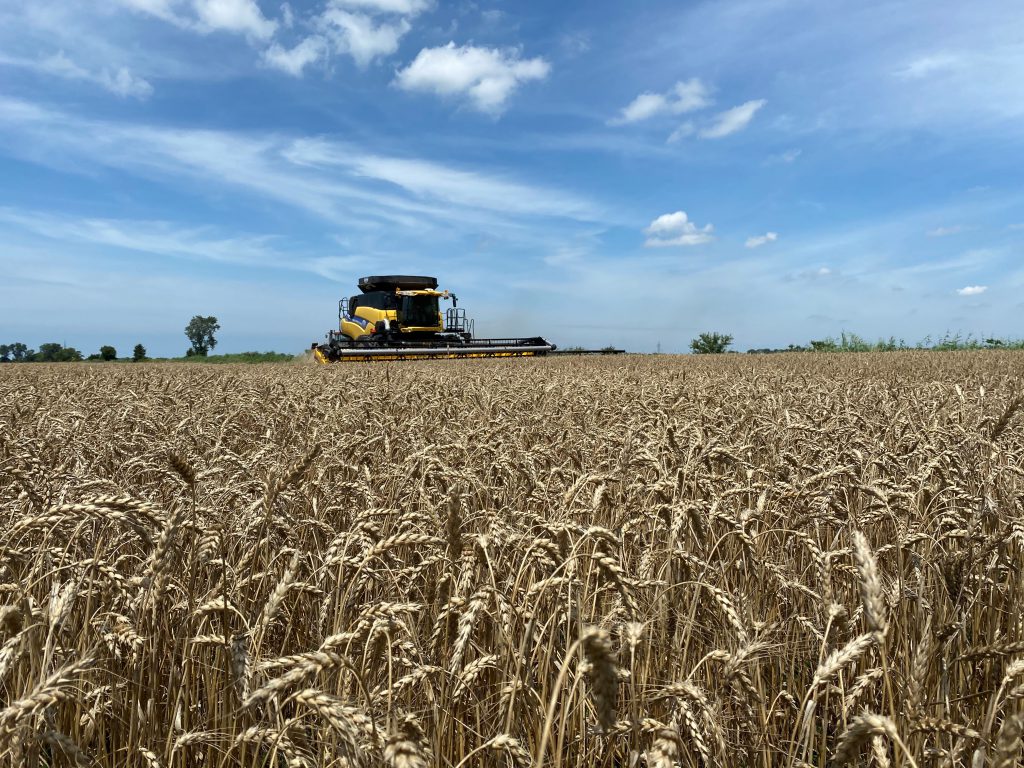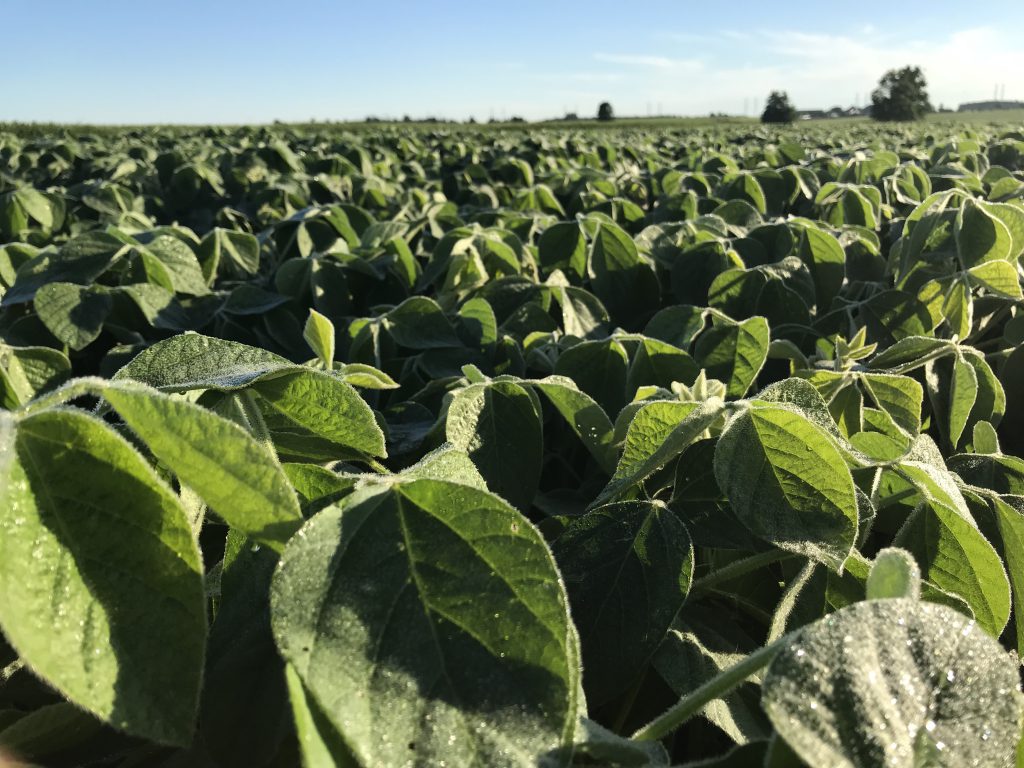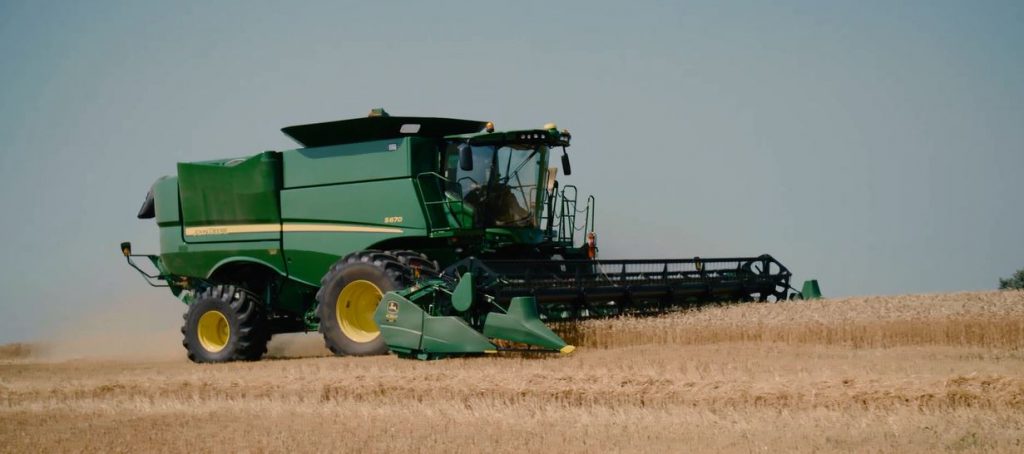An update from the field: July 2021 edition

Cover image courtesy of Grace Pearson.
Interview conducted by Caitlin Kroetsch, Communication Coordinator Co-op with Grain Farmers of Ontario, who is in her 4th year of Food and Agriculture Business at the University of Guelph.
Towards the end of June, I had the chance to sit down with Grain Farmers of Ontario chair, and grain farmer Brendan Byrne to discuss field updates on Ontario’s grain fields! We talked about what happened in fields across Ontario throughout June, what will be happening in fields during the month of July, and what he predicts to be happening throughout the month of August in farmer’s fields.
Byrne lives in Essex County, close to the town of Essex with his wife and two teenage kids. He has an honours Business and Economics degree from the University of Windsor. Farming was not part of Byrne’s initial plan, but he began to get more involved in his family farm and was then asked to take over the family business. He is now involved in many different organizations across Ontario and is a huge advocate for Ontario agriculture. Learn more about Byrne here.
The month of June ended up being an overall good month for crops; Byrne says, “the soybeans are looking well, and I’ve seen corn that’s already shoulder high in some spots, and wheat is still looking good with harvest around the corner.”
The province of Ontario saw some varied weather throughout the month of June; some areas saw minimal amounts of rain, whereas other areas saw 5 to 7 inches of rain. There are issues that can arise when there are only small amounts of rain, but there are also issues that can happen when there is too much rain. This varying weather across the province has left different types of problems for farmers to manage that is entirely based on where their farms are located.

We all know the issues that come with plants not getting enough water, as plants needs water to grow. However, Byrne compares crops having too much rain to overwatering common houseplants; “you can compare it (too much rain or not enough rain) to house plants or gardens. A little bit of water will perk up the plant so why not put a little bit more? After adding too much water you begin to see that the plant will being to wilt.” If a crop gets too much rain and is underwater, the sun acts as a magnifier and heats up the plant and will ruin the crop, says Byrne. Additionally, Byrne states “soybeans, we always say they don’t like wet feet when they’re starting to grow. Soybeans don’t like their roots to be really wet, or they start to rot, and plants will start to die.”
Throughout the month of July Byrne states that as you are driving past fields in Ontario, you can expect to see corn that will be chest to eye level by mid-July. Soybeans will begin to fill in some of the rows so that you can only see the plant and none of the ground below; creating what is called a canopy.
The winter wheat crop is looking good, as there were some timely rainfalls within the months of May and June. Farmers are very optimistic about wheat harvest this year, as it is beginning to look as if wheat will be harvested early this year, even in areas that had minimal rain fall. Byrne is predicting that farmers in his area (Essex county) will begin to harvest there wheat in the 2nd week of July. Harvest will soon follow throughout July and August throughout Ontario. Farms more north or in cooler climates will harvest their wheat crops a bit later than those in the south parts of the province. You may also see some farmers tilling their fields to prepare the ground for cover crops that will be planted later in the summer.

Once wheat fields start to be harvested, you might be able to see equipment such as combines and tractors out on the roads moving from field to field to delivering their grain to their local grain elevator. Grain elevators are a structure built to hold large quantities of grain after its harvested. After farmers harvest their grain, they deliver it to a grain elevator. The grain is then stored, dried, and eventually unloaded onto a truck where it will be delivered to its next stage: a flour mill, feed mill, distillery, crusher plant, or ethanol plant for example. Learn more about grain elevators here.
Byrne would like to remind everyone that during the month of July “you could see tractors moving around during this wheat harvest and some of the other activities; we’re (farmers) are trying to be safe on the road we don’t want to hold anybody up as much as they don’t want to be held up.” Being extra cautious around large piece of farming equipment on the road is highly recommended. It can be hard for individuals driving the equipment to see the vehicles around them and they are doing their best to get from point A to point B as safely as possible, without trying to hold anyone up. Learn more about road safety around farm equipment here.
Byrne says “August is generally kind of a slower time for most areas. Most farmers spend this time maintaining machinery to get ready for the fall harvest that they know in on the horizon.” You may also see some cleanup spraying for weeds that may happen if some areas get heavier rain at the end of July.
Summer is a time where Ontario grain farmers start to prep for their fall harvest or begin their harvest by taking off the winter wheat fields. It is also a time where many farmers have some down time to spend time with their families ahead of the very busy fall harvest season.



